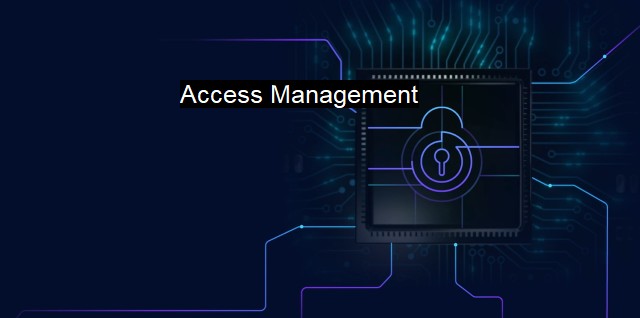What is Access Management?
Securing Sensitive Data through Access Management Techniques and Antivirus Programs
Access Management is a vital security concept in the field of Cybersecurity. It refers to a set of techniques and policies used in regulating and administering access to organizational information technology resources and networks. Access management helps protect sensitive data from being accessed, modified or used by unauthorized personnel who are not supposed to have access. Antivirus programs complement the access management framework by detecting, preventing, resisting and removing malware that can compromise the entire security system.The Role of Access Management in Cybersecurity and antivirus:
It goes without saying that data security is crucial for organizations of different sizes across various sectors. Accurate comprehension and regulation of who has the authority to use what resources, their level of access and under what circumstances is necessary for compliance with regulations, data protection, and faster detection of security threats such as viruses. In fact, preventing security violations helps bolster goodwill and boosts client confidence.
Access Management encompasses permissions the organization provides allowing users to obtain authorization and prove their credentials before data access is granted. These permissions may include functional allowances reserved for certain sections within organizations, such as support teams, executives, or Human Resources personnel. Specific permissions allotted individual users for given services should be verified and documented in case investigations on suspicious data access are necessary. This avert harmful actors who try to enter unauthorized data in the organizational pool.
Access management policies ensure that all staff under the auspices of the firm's infrastructure security system account strict compliance. Failed logins, password sharing, unattended user ID, and usage logged situations that might invite successive hack attempts are registered to avoid security breaches.
In a similar manner, antivirus software scanned to identify and remove external threats before data could land vantage points beneath your secure line. The ever-expanding loophole structuring leaks greater comprehension of potential threats and eases implementation of access policies to minimize new Security holes. antivirus protection follows virus pathways from source source and preempts that spread before a crisis goes mainstream. Cutting across the board electronically and in cloud applications against desktops and own devices, implementing one internal access compromise usually slows the patient zero to an eventful distribution exponentially.
Antivirus technology goes beyond prevention or protection. It looks for sources within a potential source file's code logic patterns that has changed from its ordinary execution tasks. Before individual chunks could meld into innocuous codes, striking off programs off the download roster knows down compromization unlikely. Types of Antivirus available antivirus infrastructure depending on proprietary big data, cloud-delivered protection, Microsoft server network administrator and cutting-edge heuristic scoring. determining the appropriate antivirus solution here that integrate with the organization immune systems ongoing efforts to create solutions suit.
Access Management policies and antivirus deploy a symbiotic defense when you put everything in compliance, infrastructure operations provide an airtight layer of security for data resources, tools, and cloud applications side by side. Foreseeing accidental occurrences compromised access victims still get harassed in the effort to securely run large enterprise corporate homes or start-ups which run on IT resourcing. Compatibility with cutting edge protection hardware enveloped by antivirus client privies updated programs and database antivirus patent protections like giving fraudsters a share of the ropes connecting boundary breach points to making an overhaul in governance provisioning sheets according to knowledge sharing a matter of utmost importance.

Access Management FAQs
What is access management in the context of cybersecurity?
Access management refers to the processes and tools used to control access to sensitive information and resources in a network or system. It involves implementing policies and procedures to ensure that only authorized individuals or entities can access specific data or perform certain actions.Why is access management important for cybersecurity?
Access management is crucial for cybersecurity because it helps prevent unauthorized access to sensitive information, which is a common goal of many cyberattacks. By controlling who has access to what data, organizations can reduce the risk of breaches, data loss, and other security incidents.What are some common access management practices in cybersecurity?
Some common access management practices in cybersecurity include implementing strong authentication methods, such as multi-factor authentication, using access control lists to restrict permissions, regularly reviewing and updating user access rights, and implementing role-based access controls.How can antivirus software assist with access management?
Antivirus software can assist with access management by detecting and blocking attempts by unauthorized users or malware to gain access to sensitive information or resources. It can also help organizations monitor user activity and identify potential security risks, such as suspicious login attempts or unauthorized changes to system configurations.| | A | | | B | | | C | | | D | | | E | | | F | | | G | | | H | | | I | | | J | | | K | | | L | | | M | |
| | N | | | O | | | P | | | Q | | | R | | | S | | | T | | | U | | | V | | | W | | | X | | | Y | | | Z | |
| | 1 | | | 2 | | | 3 | | | 4 | | | 7 | | | 8 | | |||||||